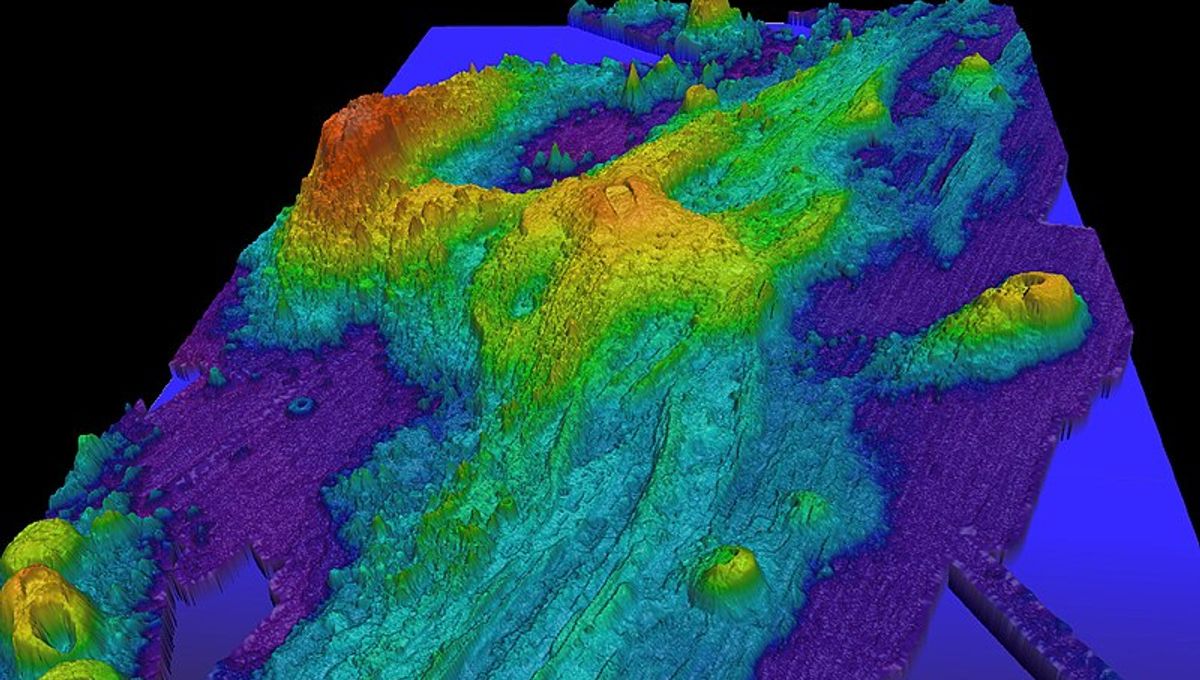
A submarine volcano near Oregon looks like it could erupt at any time, and scientists have stuck their necks out by predicting that the event will occur before the end of 2025.
Forecasting volcanic eruptions with more than a few hours’ notice is currently a huge challenge, yet researchers have identified an undersea volcano called Axial Seamount as the perfect place to start practicing. Located on the Juan de Fuca Ridge, some 480 kilometers (300 miles) off the US west coast, Axial is the most active submarine volcano in the northeast Pacific, erupting with sufficient regularity for scientists to try and study the patterns that precede these blow-outs.
For this reason, Axial Seamount was chosen as the site of the world’s first underwater volcano observatory, with the first recording equipment installed in 1997. Since then, scientists have had the chance to observe the seafloor rumblings associated with three separate eruptions, which occurred in 1997, 2011, and 2015.
The key finding so far has been related to a characteristic inflation of Axial’s surface in the months prior to an eruption, as magma accumulates underground and pressure starts to build. This is typically accompanied by a massive increase in seismic activity, with hundreds of quakes detected each day.
In their attempts to forecast volcanic eruptions at the site, researchers Bill Chadwick and Scott Nooner noted that the rate of seafloor swelling around Axial Seamount was virtually zero in the fall of 2023, but that things started to change in January 2024.
Over the next six months, the rate of inflation doubled from 5-10 centimeters (2-4 inches) per year, before accelerating again and eventually levelling out at 15 centimeters (6 inches) per year by late July. At the caldera center, the swelling reached 25 centimeters (9.8 inches) per year, leaving Axial Seamount “fully re-inflated” in relation to the level seen immediately before the 2015 eruption.
During this same period, seismicity skyrocketed, with over 500 earthquakes recorded on some days, indicating a major shift in magma supply. By October, Chadwick and Nooner reported that this situation had remained unchanged for six months, and that the volcano “can’t do this forever.”
In other words, Axial Seamount is going to have to unload some of that pressure pretty soon, which is why scientists are forecasting an eruption within the next 12 months. Summarizing these events during a recent conference presentation, Chadwick, Nooner, and colleagues explained that “based on the current trends, and the assumption that Axial will be primed to erupt when it reaches the 2015 inflation threshold, our current eruption forecast window is between now […] and the end of 2025.”
It’s worth noting, however, that this unusually long-term prediction is based entirely on patterns of behavior that appear to correlate with previous eruptions. This doesn’t mean that an eruption is guaranteed, as it’s possible that the volcano could alter its activity or do something unexpected.
Still, by observing how things develop in the coming year, researchers should be able to hone their understanding of Axial Seamount’s eruption patterns, thus providing vital clues that could help us to forecast volcanic activity elsewhere as well.
The research was presented at the 2024 annual meeting of the American Geophysical Union.
Source Link: Undersea Volcano Off The US West Coast Predicted To Erupt In 2025